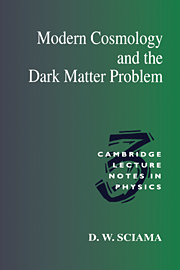Crossref Citations
This Book has been
cited by the following publications. This list is generated based on data provided by Crossref.
Wamsteker, Willem
1994.
Frontiers of Space And Ground-Based Astronomy.
Vol. 187,
Issue. ,
p.
77.
Bowyer, S.
Edelstein, J.
Lampton, M.
Morales, L.
Mercader, J. Perez
and
Gimenez, A.
1996.
Astrophysics in the Extreme Ultraviolet.
p.
611.
Bowyer, S.
Edelstein, J.
Lampton, M.
Morales, L.
Mercader, J. Perez
and
Gimenez, A.
1996.
An Instrument to Study the Diffuse EUV Astronomical Background.
International Astronomical Union Colloquium,
Vol. 152,
Issue. ,
p.
611.
Branch, David
Nugent, Peter
and
Fisher, Adam
1997.
Thermonuclear Supernovae.
p.
715.
Morales, C.
Trapero, J.
Gómez, J.F.
Bowyer, S.
Edelstein, J.
and
Lampton, M.
1997.
EURD: An Extreme Ultraviolet Spectrograph to Probe the Hot Interstellar Medium.
International Astronomical Union Colloquium,
Vol. 166,
Issue. ,
p.
41.
Bowyer, Stuart
Edelstein, Jerry
and
Lampton, Michael
1997.
Very High Sensitivity Extreme Ultraviolet Spectrometer for Diffuse Radiation.
The Astrophysical Journal,
Vol. 485,
Issue. 2,
p.
523.
Sethi, Shiv K.
1997.
Radiatively Decaying Neutrinos and Photoionization of the Universe at High Redshifts.
The Astrophysical Journal,
Vol. 474,
Issue. 1,
p.
13.
Bowyer, Stuart
1997.
New Insights on the Local ISM from EUV Observations.
International Astronomical Union Colloquium,
Vol. 166,
Issue. ,
p.
45.
Sciama, D. W.
1997.
On the Ionization of Warm Opaque Interstellar Clouds and the Intercloud Medium.
The Astrophysical Journal,
Vol. 488,
Issue. 1,
p.
234.
Bharadwaj, Somnath
and
Sethi, Shiv K.
1998.
Decaying Neutrinos and Large‐Scale Structure Formation.
The Astrophysical Journal Supplement Series,
Vol. 114,
Issue. 1,
p.
37.
Morales, C.
Trapero, J.
Gómez, J. F.
Bowyer, S.
Edelstein, J.
and
Lampton, M.
1998.
The Local Bubble and Beyond Lyman-Spitzer-Colloquium.
Vol. 506,
Issue. ,
p.
41.
Sciama, D. W.
1998.
Optical Emission Lines from Warm Interstellar Clouds: A Decisive Test of the Decaying Neutrino Theory.
The Astrophysical Journal,
Vol. 505,
Issue. 1,
p.
L35.
Bowyer, Stuart
1998.
The Local Bubble and Beyond Lyman-Spitzer-Colloquium.
Vol. 506,
Issue. ,
p.
45.
Bertolami, O.
and
Nunes, F.M.
1999.
Nucleosynthesis constraints on a scale-dependent new intermediate range interaction.
Physics Letters B,
Vol. 452,
Issue. 1-2,
p.
108.
Edelstein, Jerry
Bowyer, Stuart
Korpela, Eric J.
Lampton, Michael
Trapero, Joaquín
Gómez, José F.
Morales, Carmen
and
Orozco, Veronica
2001.
Science with Minisat 01.
p.
177.
Ćirković, M. M.
and
Samurović, S.
2001.
Cosmological constant and the fate of the DDM theory.
Astronomy & Astrophysics,
Vol. 373,
Issue. 2,
p.
377.
Sciama, D. W.
2001.
Science with Minisat 01.
p.
151.
Ribeiro, Marcelo B.
2001.
The Apparent Fractal Conjecture: Scaling Features in Standard Cosmologies.
General Relativity and Gravitation,
Vol. 33,
Issue. 10,
p.
1699.
Mapelli, M.
and
Ferrara, A.
2005.
Background radiation from sterile neutrino decay and reionization.
Monthly Notices of the Royal Astronomical Society,
Vol. 364,
Issue. 1,
p.
2.
Trimble, Virginia
and
Aschwanden, Markus
2005.
Astrophysics in 2004.
Publications of the Astronomical Society of the Pacific,
Vol. 117,
Issue. 830,
p.
311.





